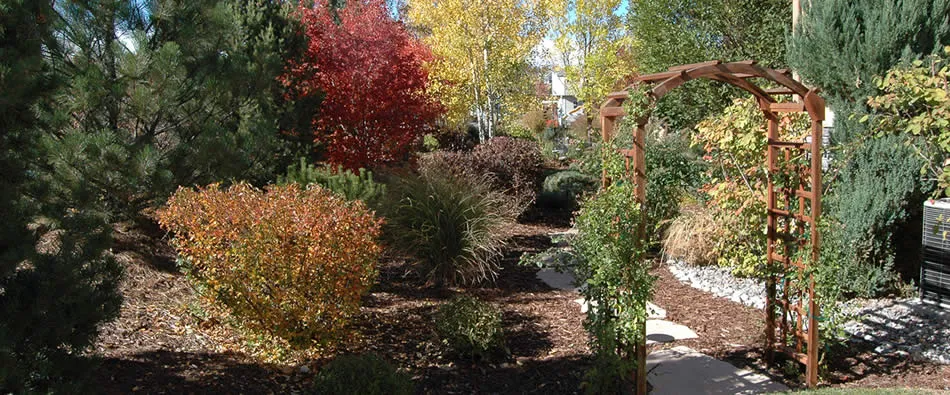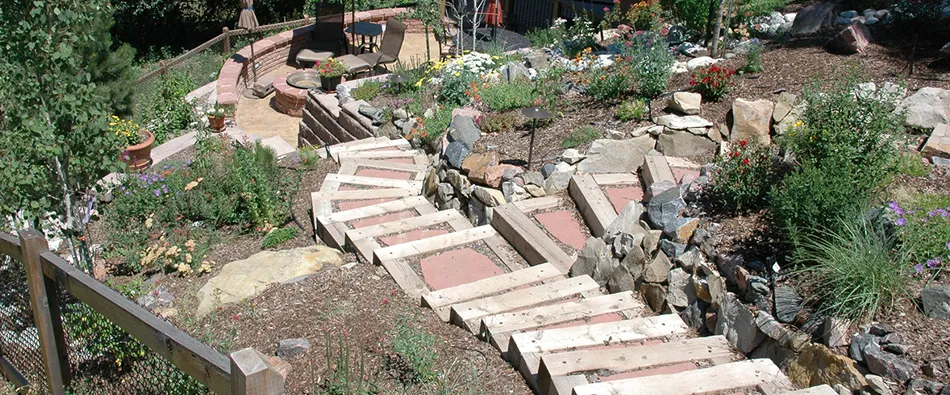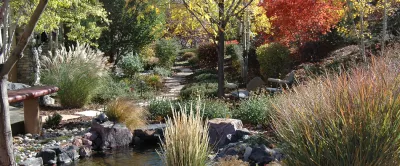Choosing a tree or shrub from a nursery is an art and a science. Small trees and shrubs adapt quicker to planting than larger specimens, especially trees.
A healthy young tree has a main stem, or trunk, with bark that is undamaged and has not been pruned at the top. The trunk should thicken as it tapers toward the roots.
Depending on the variety, branches should be evenly spaced about eight inches apart around the upper one-third to one-half of the trunk. Avoid trees with branches that have been pruned at the tips.
Trees and shrubs are sold from nurseries in various ways including bare root, container-grown, and balled and burlapped. Bare root trees and shrubs do not have soil around their roots and are usually less expensive than container grown or balled and burlapped plants. Bare root plants should be purchased and planted when the buds are dormant, usually in March or April.
Container-grown plants are ready to plant when their root systems are developed, and they are not placed on the market until then. Roots should be numerous and preferably not circling inside the container. These plants experience the least shock from transplanting.
Balled and burlapped trees and shrubs are dug either from a nursery field or from the wild. Those dug from the wild are called collected stock. Collected stock generally is less successful than nursery-grown stock because many roots are lost when trees are dug up from the wild. Balled and burlapped plants are only available for sale when they are ready to plant.
Raised Bed Gardening
Block style, raised bed vegetable gardening has many advantages including less soil compaction, and higher yields with less weeding and less watering.
Raised beds are easy to construct with 2 X 6, 2 X 8, or 2 X 10 construction lumber or other landscaping timbers. Untreated construction lumber lasts for many years and is less prone to warping than is treated lumber. Four feet is an ideal width for plots, because it allows gardeners to easily reach into the bed without stepping into it. The length of the plot can be chosen to fit the space. Allow two to three feet between beds for walkways, and for the ease of wheelbarrow use. Raised beds with separating walkways minimize compaction to plant growing beds.
Make the box by simply attaching four-foot end sections onto the box sides, with long decking screws, for a secure connection.
Place the box in the desired location and fill with soil. Ideally this soil will be like the site soil and should contain no more than 5% organic materials. If the added soil is different in composition, it should be mixed with the soil below the box, to avoid a textural interface which might interfere with water and air movement. When purchasing soil amendments, and or top soil, be cautious, as some of these products may contain high salts.
When mulching between raised beds, use wood chips. Dried grass clippings, leaves, or compost works well to mulch around the plants inside the raised bed. Raised beds are easy to water with drip irrigation and soaker hoses, thus minimizing water usage.
Cool-season vegetables are uniquely adapted to Colorado’s climate because they can withstand light to moderate frosts, adding a month or more of gardening time at the beginning and end of our growing season. At higher elevations, they’re the only vegetables that grow successfully.
Among the cool season vegetables there are five that live from one growing season to the next and are known as perennials. They are asparagus, chives, horseradish, rhubarb and shallots. Once established, these vegetables can produce for many years.
Along the Front Range of Colorado, asparagus harvest begins in May. Chives can be used for flavoring salads and grow from April until December. Horseradish roots can be dug whenever the ground isn’t frozen. The first rhubarb stalks can be pulled in June and continue if there’s a surplus of large stalks. Shallots form clumps as they grow and can be harvested anytime the ground isn’t frozen by breaking out part of a clump and dividing the bulbs.
While it’s true that these perennials can produce from year to year, they won’t last long if abused. Be sure they’re kept free from weeds and pests, and that they’re fertilized correctly. Cool-season vegetables shouldn’t be shaded or walked on, and need water only when their soil seems dry a few inches below the surface.
When harvesting, always leave enough of the plant so it can survive to produce again. Since it’s hard to estimate how much can be harvested without hurting these vegetables, harvest small amounts and watch the plant closely afterwards.
Most other cool-season vegetables only are grown for one season and are known as annuals. They are either root or leaf crops. Radishes are the earliest of the root crops, followed by beets, carrots, turnips and rutabagas. Parsnips, another root crop, mature just before the ground freezes and is the only one of this group that can last through the winter. In fact, its quality is improved by spending the winter in the ground.
Broccoli, cauliflower, onions, kohlrabi, potatoes and peas, along with the previously mentioned perennials, leaf and root crops, are the cool season crops for Colorado. These crops should receive top priority in high altitude gardens and for extending the season for gardens along the Front Range.






